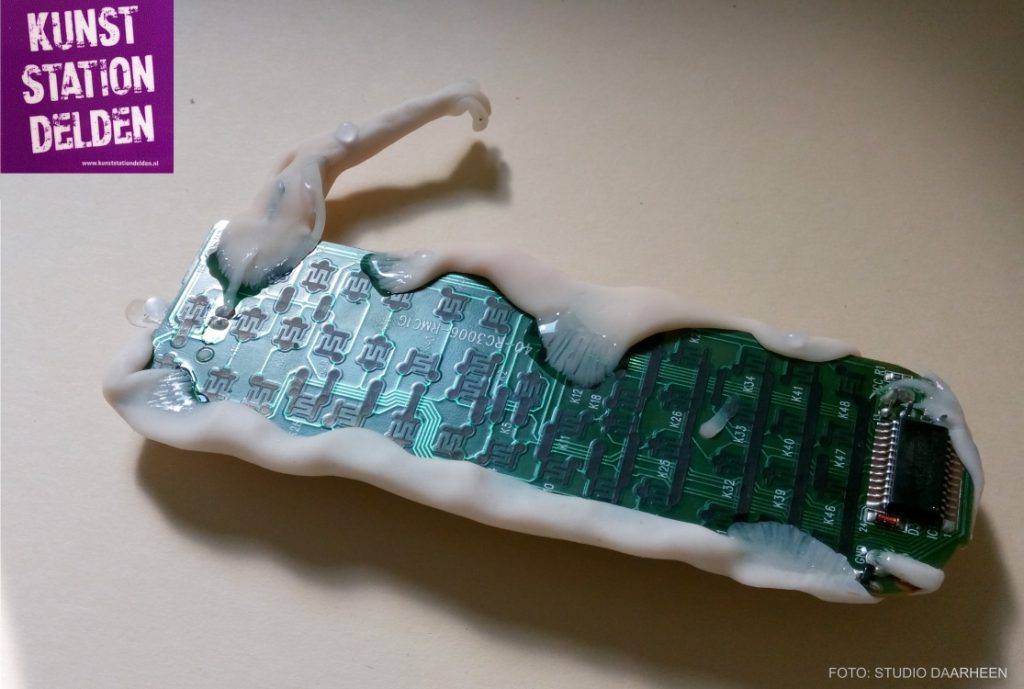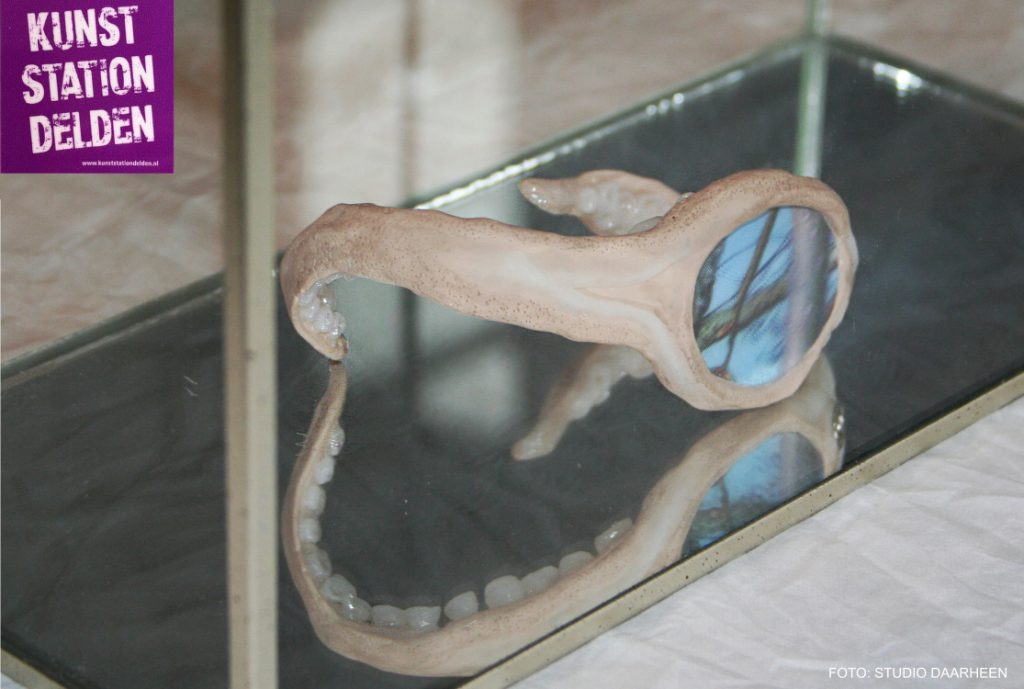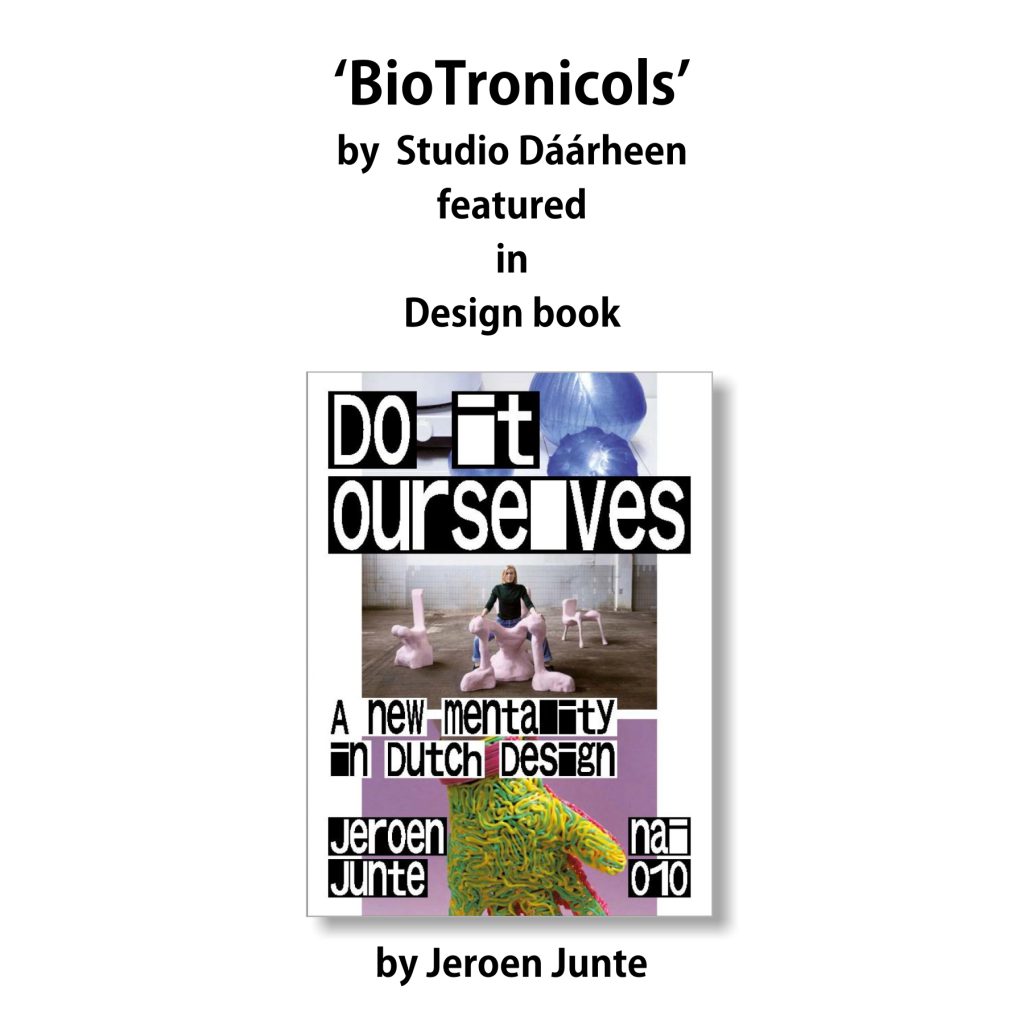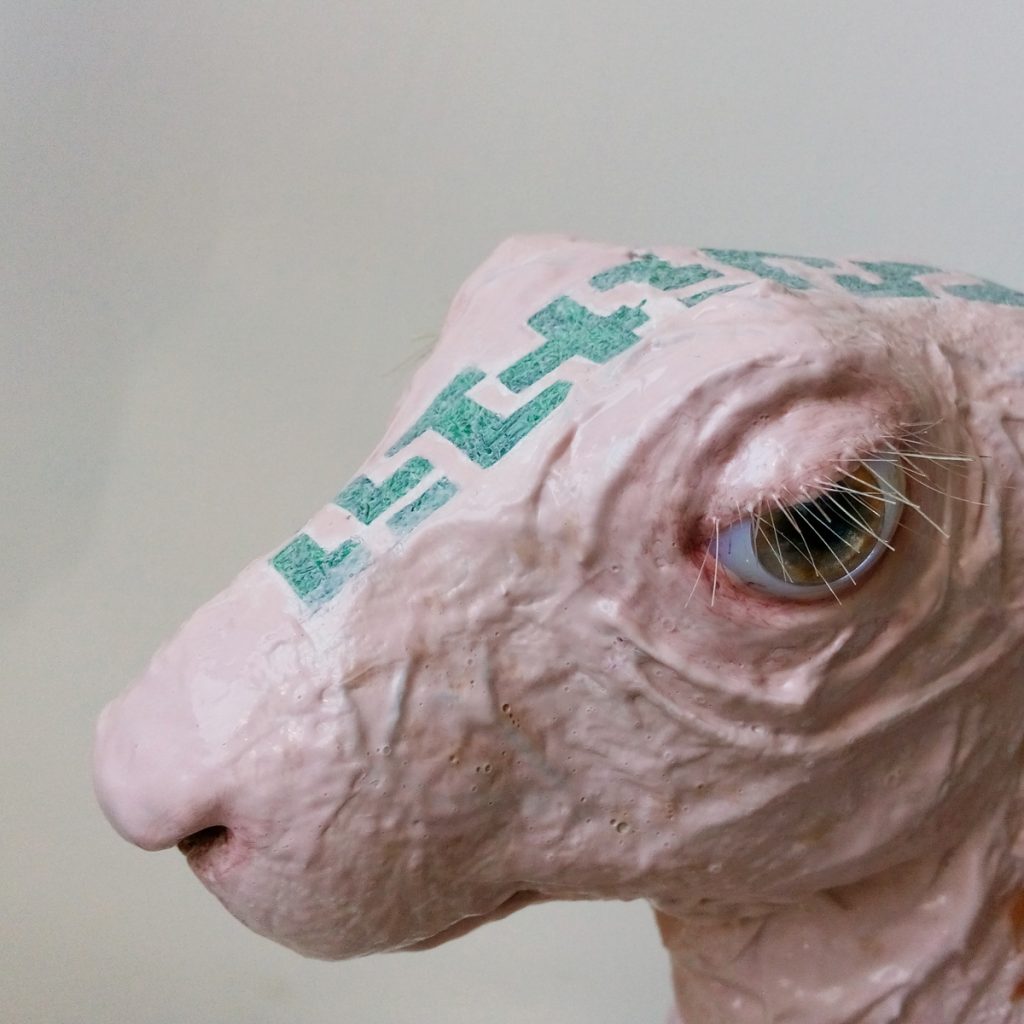









‘Nicole Spit exposeert met BioArt in de mooie ruimte aan de Dorpsstraat 23, bij de Kunstfietsroute Castricum. Met haar BioArt reflecteert kunstenaar Nicole Spit (DesignStudio Dáárheen) op de toekomst van de BioTechnologie. Met diverse speculatieve BioArt objecten geeft zij een visie op hoe de toekomstige biotechnologische producten er over 10 a 20 jaar uit zouden kunnen zien.’
De soms huiveringwekkende of enigszins absurde kunstobjecten werden door Nicole van de nodige uitleg voorzien. Waarbij de ‘Levende Camera’ diverse nieuwe vrienden kreeg, bezoekers de ‘TandenMossel’ wel zagen zitten en de ‘BioWatch’ eigenlijk al als gewoon product werd geaccepteerd. Weer andere bezoekers raakten de tactiele ‘Levende Electronics’ terughoudend en dan verrast aan en kregen medelijden met de ‘LabRat’. Na uitleg waren vele bezoekers overtuigd van de positieve effecten van een bladgroentatoeage als extra dienst van een wellnesscentrum of kapper. Ook bij de geprinte organen was de acceptatiegrens al ruimschoots gepasseerd. Het Virtual Reality Implantaat werd met de nodige scepsis bekeken, terwijl de digitale wereld eigenlijk al bijna in ons is gekropen en velen al bijna de helft van hun ‘wakkertijd’ in deze wereld verblijven…

Tijdens de BioArt week (2018) in Pakhuis Dekker in Heiloo, waren de tentoonstellingen ‘BioArt, a vision on biotech’ en ‘NeoBio’, van Nicole Spit (DesignStudio Dáárheen) te zien.
During the ‘kunstfietsroute Castricum 2016’ on the 4th and 5th of June I will present the BioArt objects which reflect on the future of biotechnology. And on sunday the 5th I will also give a short presentation on BioArt and BioTech.
De tentoonstelling ‘BioArt, a vision on biotech’ was ook te zien in KunstStation Delden

BIOTATTOO
This is an example of a smart tattoo. If sea slugs can steal chloroplasts from algae for functional photosynthesis, why can’t we? Could we use chloroplast tattoo`s to reduce costs on food? Or simply as a lifestyleproduct? What would it look like if it would be used in commercial GMO ‘products’. The organism is altered with CRISPR-Cas and is tattooed with a choroplast BioTattoo, wich provides extra energy.
GMO with BioTattoo.
‘Manufacturer: Vancouver TechTransit.
Genecombinationcode: Neutral03Har54Dog568Pole33Tur2.
Protocol: N-AM4 Rev 968.
Usage: field exploration , research’
This is an example of a genetic modified organism with a smart tattoo. A herd of these animals could be used to explore harsh environments. The tattoo-code can be read from a distance, for example from a helicopter or a drone.
Unknown BioTronicol
What if gene-hacking and making biotronicols would be so easy, it could be made by everyone? What if there would be genetic modified animals and no one knows who created them? And for what purposes would they be used?
What if hybrid viruses were developped, with the aim of changing both the binary digital code and the DNA code of Biotronicols? What if your biotronicol was going to mold or rot? Is six base DNA perhaps even more vulnerable? Could DNA switches be turned on and off? Could spyware be pre embedded in biotronicols which are ready to be sold? What if you put biotronicols from two different manufacturers close next to each other? Is a biotronicol a living being with consciousness or could it develop one?
Organ Printing

 Ear. New grown. Skin. Printed cells grow over a structure. The beginning of a new ear. Cartilage. Tissue with electrical circuit.
Ear. New grown. Skin. Printed cells grow over a structure. The beginning of a new ear. Cartilage. Tissue with electrical circuit.
We can print ears and small organs, but can we also print brain tissue?
Scientists in Australia have created brain-like tissue in the lab using a 3D printer and special bio-ink made from stem cells. (Advances healthcare materials Issue online:6 September 2017)
The research takes us a step closer to making replacement brain tissue derived from a patient’s own skin or blood cells to help treat conditions such as brain injury, Parkinson’s disease, epilepsy and schizophrenia.
One of the challenges of using iPSCs (human induced pluripotent stem cells), is that, like embryonic stem cells, they have the potential to develop into teratomas — disturbing looking tumours that contain more than one type of tissue type (think toenails growing in brain tissue, or teeth growing in ovary tissue…).